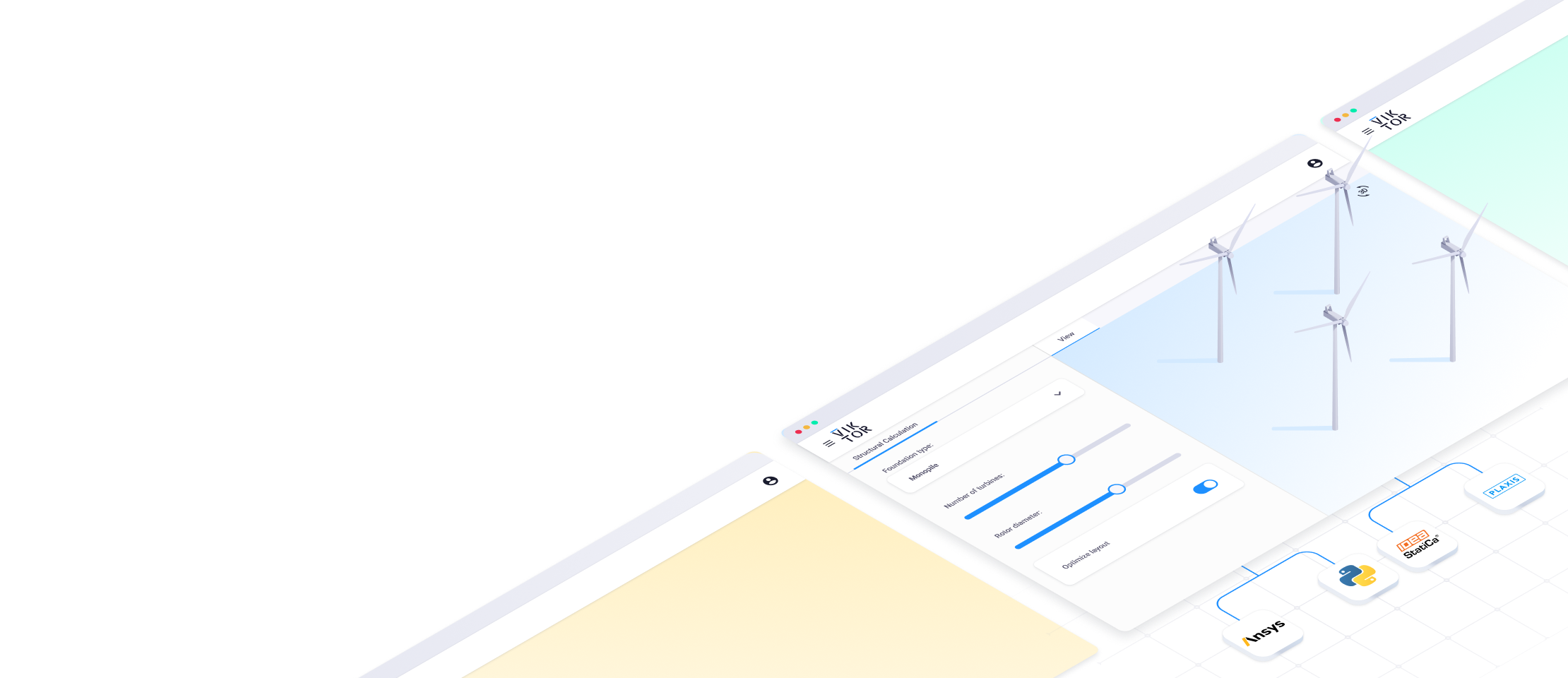Optimal pile foundation design saves tons of CO2

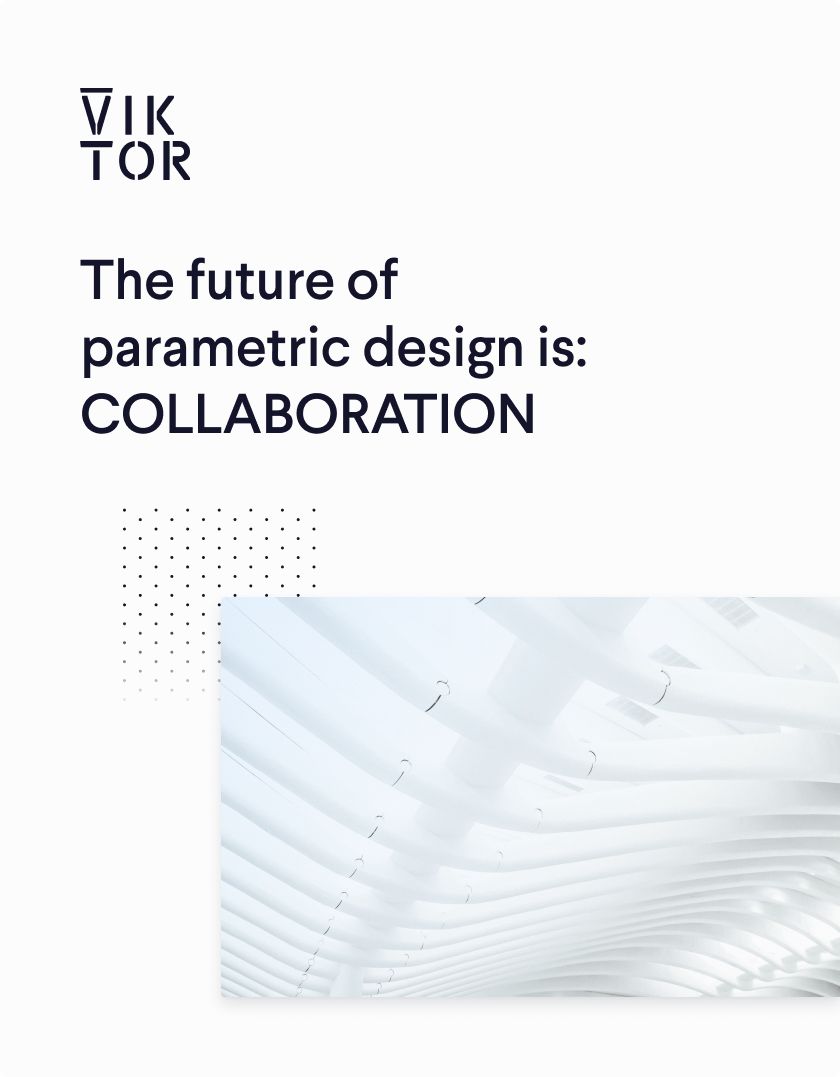
Download the white paper and get INSPIRED
Learn how collaborative parametric design models allow you to work together for better solutions.
Features of version 1.0
Voorbij created a web-based parametric design application on the VIKTOR platform to optimize the (re)design process of pile foundations, which helped their clients save a lot of time and money.
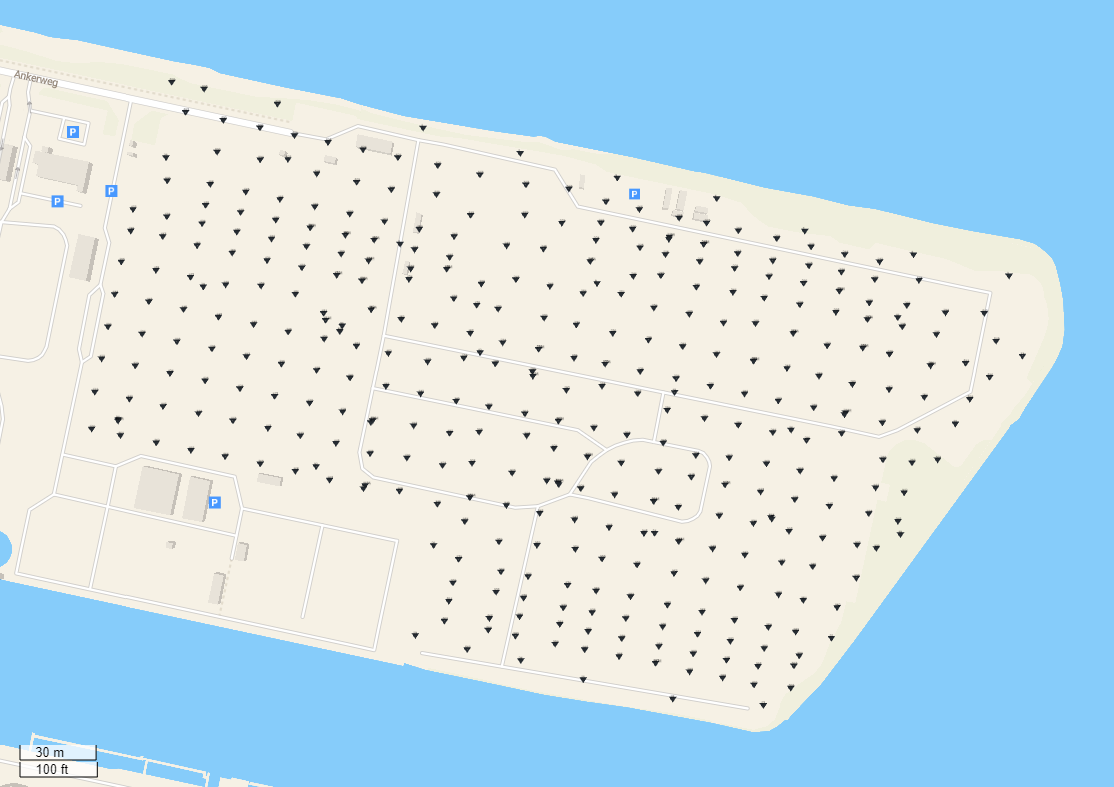
Map view of soil investigation
Before, Voorbij optimized pile foundations based on their experience, by grouping CPTs, and including soil variances in a smarter way.
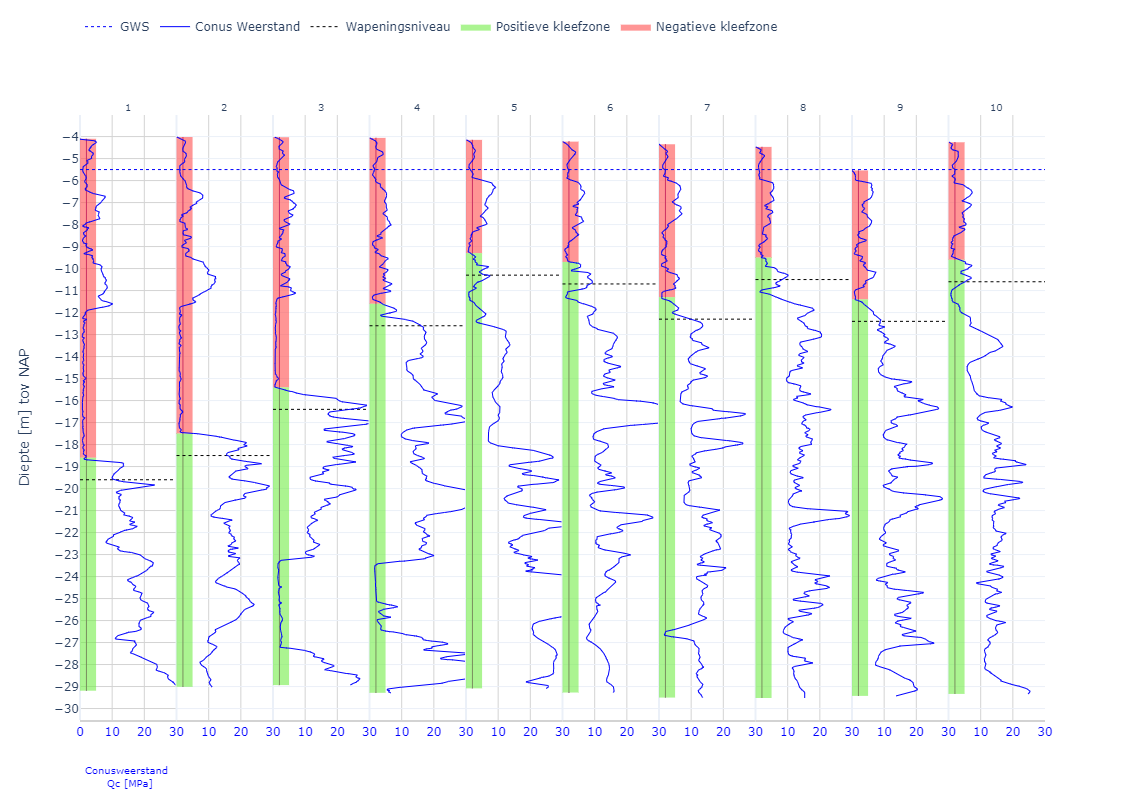
Soil interpretation of CPTs
Now, they use their application on the VIKTOR platform to speed up this time-consuming manual process. Their application allows for the automated grouping of CPTs based on a given set of rules and generates optimized pile plans according to aspects such as cost, soil structure, grouping, pile tip levels, and pile types. The app also provides Voorbij with rich visualizations of results for quick interpretations.
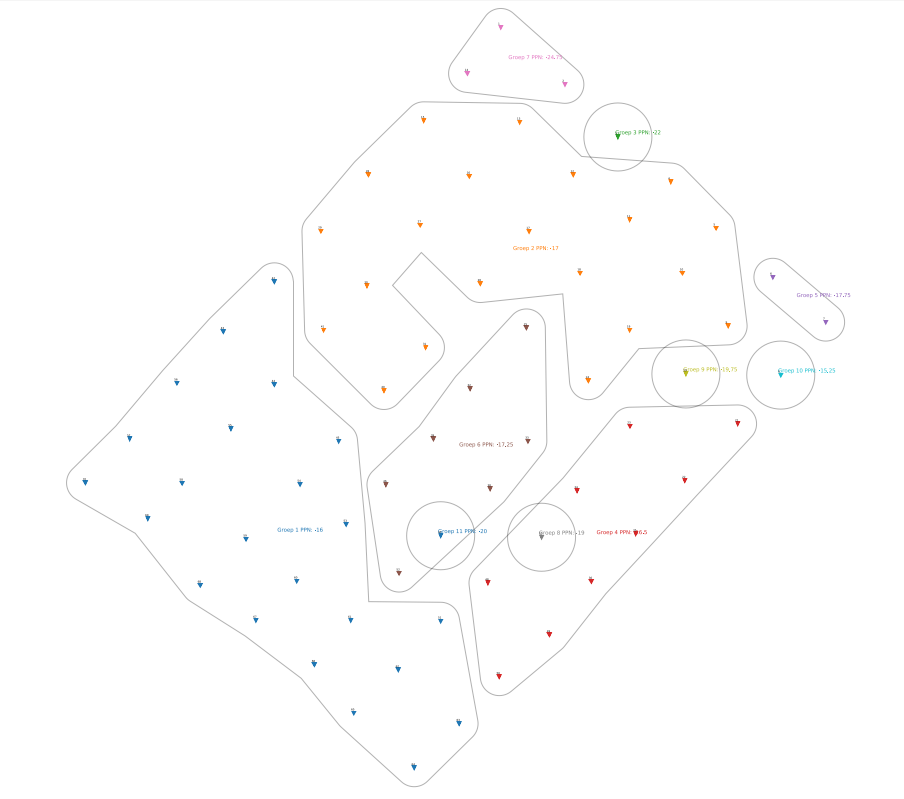
Visualization of calculation results
Using their own calculation core, Voorbij is able to indicate upper and lower limits of pile tip levels, easily generate designs, see interactive load-bearing charts, and visualize piles in combinations with the CPTs based off one that information in their application.
From 1.0 to 3.0 real fast
Now, Voorbij has added some new features to their application.
Load carrying capacity
In the first version, Voorbij was only able to calculate on pressure loaded piles. With the new version, they are also able to calculate on pull loaded piles. These are very common in large projects and construction pit projects, which means Voorbij can take on these projects from now on as well.
“With the application, we can now consider the whole construction pit integrally.” - Mark Remijnse, Head Sales at Voorbij Funderingstechniek
Cost calculation
Initially, optimization was done by reducing material. As of more recent, the application also allows for calculations and linking of actuals costs to provide engineers with a clearer picture of expenses and early on the project already guide the design in the right direction based on budget.
Work execution
Also, a somewhat more logistical feature has been added, which is the improvement of work execution. The optimization of a project was previously done separately from the actual construction. Now, the execution and construction parts of the project have been added to the application as well. For the work execution part especially are some preparations required that have been added to the application now:
-
Smart grouping of elements: Which allows for the optimal design of foundations. Since the soil that a construction project is build on often has a lot of differences in structure, piles vary a lot in size, such as length, diameter, and/or reinforcement. By clever grouping of these piles (putting the right pile in the right place), you can logistically save a lot of time and reduce chance of errors.
-
Bulk orders: If you want to order material, it is most beneficial to order in large numbers with low variety, based on the smart grouping you did before to avoid and reduce unnecessary costs.
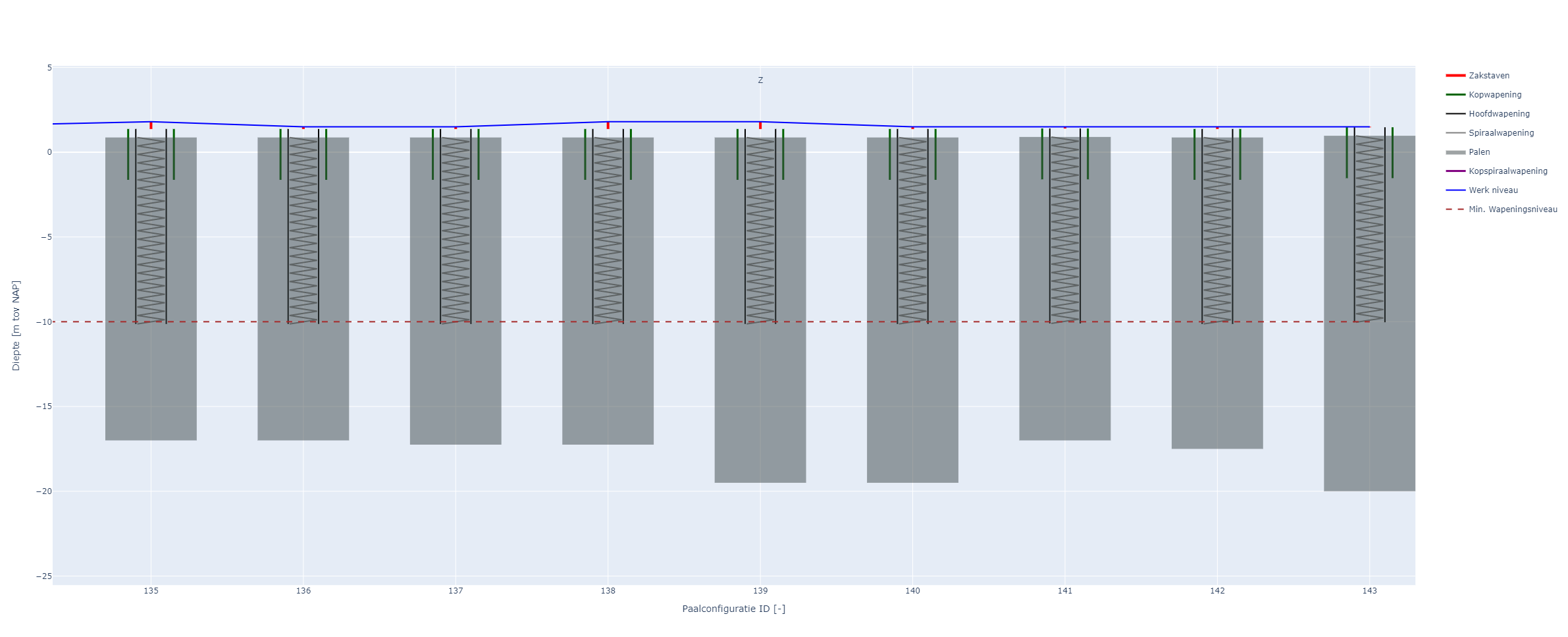
Visualization of combined pile rebar cages
Read more about version 1.0 here
Increased calculation capacity
In the early version of the application, Voorbij was already able to use their application to do batch calculations of CPTs. Back in version 1, they could run an analysis of about 150 CPTs at the same time. With the latest version however, they are able to calculate up to 1000 CPTS simultaneously, increasing the calculation capacity.
An environmentally friendly application
The addition of new features was not only beneficial for Voorbij and their clients, it also brought some environmental advantages along.
Less crane days
With the release of the latest version of their application, Voorbij was able to reduce days of crane usage by 40 in one case. This meant 40 days of proximality 250 litres of fuel less, which is good for 10.000 litres reduction of (CO2) emissions.
Less concrete
Additionally, the new features allowed for the creation of a design that required about 6.000 to 6.500 m3 less concrete, resulting in Voorbij using 26.500 m3 concrete for their design were another company calculated about 33.000 m3 concrete for their design. Every m3 of concrete consists of 350kg cement, meaning every 3 m3 of concrete is about 1.000 kg cement, which makes up for about 2.275 tons kg less cement. This also equals 2.275 tons less CO2 emissions. For this design, that would be over about 2.000 tons CO2 emissions less! On top of that, it also reduces transport of approximately 500 truck movements of ready-made mixed concrete.
From developer to advisor
Before working with automation applications, when taking on a project Voorbij would receive a definitive design that they had to make into an execution design, meaning they could only adjust some details. Since they started using their applications, they are pulled into the process from an early stage on, mostly somewhere between preliminary design and definitive design. In this stage, there is still a lot of room for advisement, improvement, and optimization.
According to Voorbij, their engineers are the ones who are now talking to the constructors, which works very well, as they understand each other best.
“Before, we were mostly doing calculations. Now we are able to put a lot of effort on advising. You can use your cleverness and really add value to a project this way.” – Wiebren Koers, Geotechnical Advisor at Voorbij Funderingstechniek
“Thanks to our applications, our engineers are now only doing 4 up to 8 hours per design calculation instead of 20 to 40 hours per design. This, I think, is still too much however, since they can add the most value by sharing their knowledge!” – Mark Remijnse, Head Sales at Voorbij Funderingstechniek
The BASE FT tool
Voorbij has been working hard on collecting all their project data and creating a database for the purposes of comparing their data and applying Machine Learning techniques to improve and predict future on future projects.
The BASE FT tool consists of three pointers, which are the applications, their machines, and a database. Currently, there are three applications, but Voorbij is aiming to expand BASE FT’s network and incorporate more external applications from other companies as well.
“It is important that BASE FT can be used to link other applications and disciplines to your processes” – Mark Remijnse, Head Sales at Voorbij Funderingstechniek
Furthermore, the machines that are part of BASE FT constantly track data when used on a project, this data is gathered and saved in the BASE FT database, where they use data engineering to optimize and better generate future designs.
More to come
Besides expanding BASE FT’s network, Voorbij wants to work on improving their current applications as well. For example, by adding a nitrogen module to the pile application. They also want to start using the data from BASE FT’s database to predict the course of a building project, analyse execution data, and improve their designs.
Read more about how they do this here.
And see how you can build your own parametric design applications here.
About VIKTOR
You've just read one of the many use cases of the VIKTOR platform. I hope you found it an interesting read! However, there is much more to the VIKTOR platform than only this specific case. Let me tell you more about us:
VIKTOR is a low-code application development platform that empowers engineers and other domain experts to revolutionize their workflow by effortlessly creating user-friendly web applications with nothing more than Python. The VIKTOR platform consists of the following pillars:
-
The VIKTOR SDK: Application development is time-consuming and not the core business of many engineers, but web applications are truly an amazing asset. With the VIKTOR SDK, you can build your own Python-based web apps. The SDK takes care of the back-end, front-end, and hosting, so you can easily transform your Python scripts into any web app and start automating the boring.
-
The Workers: VIKTOR allows for seamless integration with other third-party software packages, such as Revit, Dynamo, ETABS, Grasshopper, and many more. The VIKTOR workers allow you to easily connect your app to these software packages by pushing and pulling data to and from them, eliminating the boring manual work. This way, you can create a whole new level of interoperability, all within a single app, making your VIKTOR app the single point of truth.
-
The Company environment: VIKTOR comes with a company environment, giving you the ability to provide access to users within and outside your company to use your apps. The company environment is a hub where all developed apps are stored and can be used, much like a library. To top that, end-users do not need to install any third-party tools that integrate with a VIKTOR app to be able to use them. The user management system lets you fine-tune user rights within applications (which have their own user management and database), while also providing valuable insights into app usage. This enables you to measure the adoption of the digital tools developed.
You can build any application you can imagine on the VIKTOR platform. Automating the boring tasks with ease, so engineers can fully focus on their engineering work again.
If this sounds interesting to you or your company, let's have a chat, you can reach me via: swolters@viktor.ai
